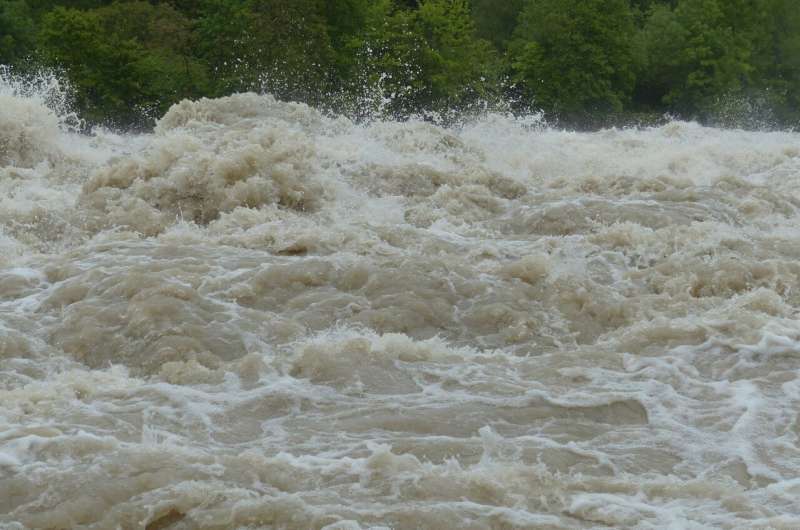
Increasing the amount of gender-based violence experienced by women, girls, and sexual and gender minorities is at risk due to the climate crisis.
A team led by a researcher at the University of Cambridge analyzed current scientific literature and found that the evidence paints a bleak picture for the future as extreme events drive economic instability, food insecurity, and mental stress.
Floods, droughts, and storms cost over 300,000 lives between 2000 and 2019. Over the past two decades, the occurrence of floods, storms, and droughts have all increased. Climate change is expected to raise these figures further.
Structural power inequalities, health-care inaccessibility, resource scarcity and breakdowns in safety and law enforcement are some of the reasons why extreme weather and climate events have been seen to increase gender-based violence. The long-term consequences of violence include physical injury, unwanted pregnancies, exposure to HIV or other sexually transmitted infections, infertility problems, and ramifications for children.
A systematic review of existing literature was done to better understand the relationship between extreme events and gender based violence. The approach allows them to bring together studies that are conflicting and under-powered.
Several types of extreme events, such as storms, floods, droughts, heatwaves, and wildfires, along with gender-based violence, such as sexual violence and harassment, physical violence, "witch" killing, and emotional violence, were explored in 41 studies. All but one of the studies looked at cis gender women and girls.
Evidence shows that gender-based violence is worsened by extreme weather and climate events due to factors such as economic shock, social instability, and stress.
The perpetrators of violence ranged from partners and family members to relief workers and government officials. The relationship between extreme events and gender-based violence can be expected to be different in different settings. The experience of gender-based violence during and after extreme events seems to be a common experience in most contexts studied, suggesting that amplification of this type of violence is not limited geographically.
Kim van Daalen is a Gates Cambridge Scholar at the Department of Public Health and Primary Care at the University of Cambridge.
The root of this behavior are patriarchal structures that allow and encourage violence. Women, girls, and sexual and gender minorities are disproportionately vulnerable to the adverse impacts of extreme events because of existing social roles and Norms.
Experiencing gender-based violence can make you more vulnerable. When faced with the likelihood of harassment or sexual violence in relief camps, some women or sexual and gender minorities choose to stay home or return to their homes, putting them in more danger from extreme events and further limiting their access to relief resources.
Extreme events could increase violence and make it harder to report it. In countries where protecting a daughter's and family's honor and marriageability is important, as well as fears of coming forward, failures of law enforcement, and unwillingness to believe victims, reporting remains problematic.
Disaster management needs to adapt to drivers of gender-based violence It's important that it's informed by the women, girls, and sexual and gender minority populations affected and takes into account local sexual and gender culture and traditions.
Post-disaster shelters and relief services designed to be exclusively accessed by women, girls, and sexual and gender minorities are examples of such interventions.
Opportunities to negotiate their circumstances and bring positive change can be brought by empowerment initiatives for women and sexual and gender minorities. Women's groups have been used to improve reproductive and maternal health by empowering women to identify and prioritize local challenges and solutions. Extreme event management could use similar programs to empower women.
There are case studies.
Violence and intimidation were caused by Hurricane Katrina.
The Gulf Coast of the United States experienced a rise in gender-based violence in the aftermath of Hurricane Katrina. Sexual violence and partner violence went up in Mississippi after the disaster, according to a study.
The gay community in New Orleans was blamed for the disaster. Same-sex couples were prevented from receiving relief from the Federal Emergency Management Agency, trans people were threatened in shelters, and LGBTQI people experienced violence in post-disaster shelters.
There were floods and early marriages in Bangladesh.
There have been studies suggesting a link between flooding incidence and early marriage. Next to being seen as a way to reduce family costs and safeguard marriageability and dignity, these marriages are often less expensive due to flood-induced impoverishment.
An example of the head of a household explaining that a storm destroyed most of his belongings left him afraid that he would not be able to support his youngest daughter, who was under 18 years old. He married off his daughters to reduce the financial burden on them.
More information: Extreme events and gender-based violence: a mixed-methods systematic review, The Lancet Planetary Health (2022). DOI: 10.1016/PIIS2542-5196(22)00088-2 Journal information: The Lancet Planetary Health